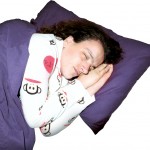
Sleep problems in young people with learning disabilities have been explored in a number of studies, particularly in relation to the impact on families and supporters, but there is relatively little in the literature about the impact of sleep problems on older people with learning disabilities. The researchers in this Dutch study wanted to look at the specific issue of measuring sleep and the impact of lack of sleep using actigraphy. (Actigraphy is a method of monitoring rest/activity cycles. Sleep actigraphs are small, usually watch-like devices used for determining sleep patterns. They can be worn unobtrusively for several weeks.)
Working with a sample of people who were clients of a group of Dutch services providers, they set out to answer two specific questions:
- ‘To what degree are actigraphic measurements successful in this population?’
- ‘What is the influence of different sensitivity settings of the Actiwatch Sleep Analysis software on the distribution of sleep variables in this group?’
To address these questions, they used data on a sample of 563 people, aged 50 or over, from a large multi-centre study on healthy ageing in people with learning disabilities. The participants were described in the survey as having borderline to profound learning disabilities. They measured sleep-wake data continuously for 14 days and nights using Actiwatch AW7. And analysed the objective variables of sleep using Actiwatch AW7 Sleep Analysis software. They considered a complete measurement of at least 7 days and nights, including at least one weekend day as ‘successful’.
The researchers were able to carry out a successful measurement in 35.5% of participants (200). They found that where they were unsuccessful, this was due mainly to problems wearing the device or incomplete information on bed time and get up time being provided. 382 participants started wearing the Actiwatch and 354 (92.3%) were able to wear it for at least 7 days. They also found that different sensitivity settings of the Sleep Analysis software did result in clear differences in sleep parameters.
The authors conclude that this small study has suggested that objective sleep parameters measured by Actiwatch can be collected, but that further research is needed into the validity of these sleep parameters to discover which sensitivity setting of the Actiwatch gives the most valid results for this group of older people with learning disabilities.
Exploring the use of actigraphy to investigate sleep problems in older people with intellectual disability, van Dijk, E. et al., in Journal of Intellectual Disability Research, 56: 204–211 cross-sectional descriptive study
